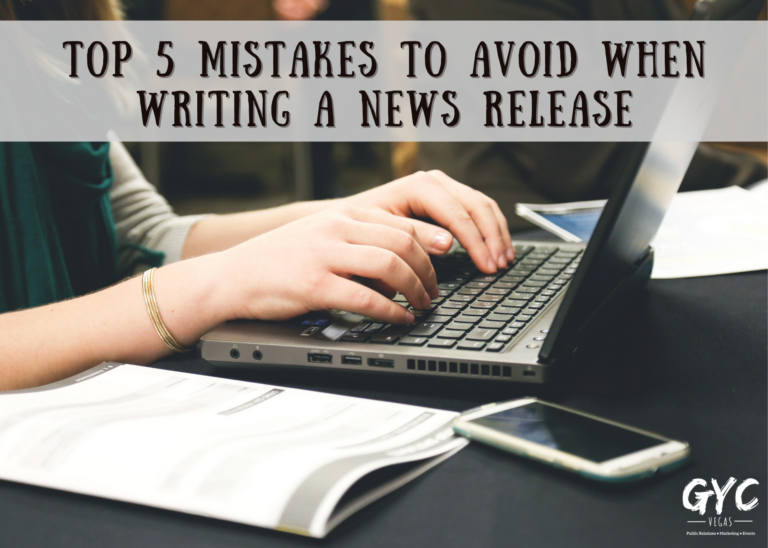A well-written news release is your gateway to valuable media coverage. It can open doors that were previously closed and help persuade journalists to write about your product, service or expertise. And that, of course, increases awareness of your company and its offerings.
On the other hand, a poorly written release will not only fail to generate publicity, but might also alienate the very reporters with whom you’re trying to build relationships. Similar to the boy who cried wolf too many times, your most important media contacts may ultimately ignore your emails if they find too many of your previous releases are irrelevant to their beats, readers or viewers.
Sending out a news release that’s too promotional or does not contain any newsworthy information will probably do more harm than good. So, it’s important to get it right before you distribute one.
Avoid the following five common mistakes, and your release is more likely to produce the kind of favorable publicity every brand craves:
Forgetting the news
The biggest mistake you can make is issuing a news release that lacks bona fide newsworthy content. That is, the subject matter might be news from your company’s standpoint but not from an external perspective.
To understand what constitutes news, you have to consume the content written by your target media contacts and outlets. Read and view the stories they produce, and then use them as a litmus test for the topic of your release.
Does it positively or negatively impact the outlet’s target audience? Is it unique or groundbreaking? Does your news tie to a current event or solve a timely problem? If the answer to any of these questions is “yes,” then it’s probably a release-worthy topic.
Making grammatical mistakes
The fastest way to get a reporter to stop reading your release is to write in the first person (except in quotes from expert sources) and/or make grammatical mistakes. Beyond triple-checking that every single word and name is spelled correctly, make sure to avoid other common errors like:
- Pronoun disagreement – For example, the company and “its” products, not “their” products.
- Apostrophe usage – In the above example, “it’s” also would be incorrect, since “it’s” is short for “it is.” Other examples include the “1980s” and “dos” (not do’s) in “dos and don’ts,” which are punctuated correctly in this sentence.
- Using the wrong word – Know when to use their, there or they’re; your or you’re; and other similar homophones, or words that sound the same but differ in meaning or spelling. A good tip is to remember that an apostrophe in a contraction replaces a letter, so “they’re” reads like “they are.”
- Misusing “that” and “who” – Use “that” when you’re referring to things, and “who” when you’re talking about people.
Burying the lead
You’ve probably heard this phrase before and know in theory how important it is to quickly and effectively communicate your most important messages. But, in practice, it’s often forgotten.
To help you get to the point immediately, ask yourself how you would describe your news to someone with limited subject matter knowledge in two or three sentences. Start with those and refine the verbiage until you have essentially conveyed the crux of your story in 50 words or fewer (another grammar tip: Use “less” with singular nouns or things that cannot be counted, like time and problems; use “fewer” for things you can count).
Writing too much
Reporters use straightforward language and deal in facts, not conjecture, so release writers should do the same. That makes brevity a valuable tool when it comes to news releases.
Journalists are busy and don’t have time to read everything they receive every day. What’s worse is that they may not even start reading a release they perceive is too long, because that’s a sure sign the writer doesn’t understand or respect their jobs.
Not getting help
Striking the right tone in a news release and including everything necessary to make it compelling to a journalist is complicated. And if you don’t have relationships with journalists to pitch your story to, your news announcement will most likely go unnoticed. Luckily, the writing and media relations experts at GYC Vegas – a Las Vegas public relations agency that gets clients noticed – can help.
Contact us today for a free consultation about how we can help you effectively share newsworthy stories about your brand with the right media contacts.


One Response